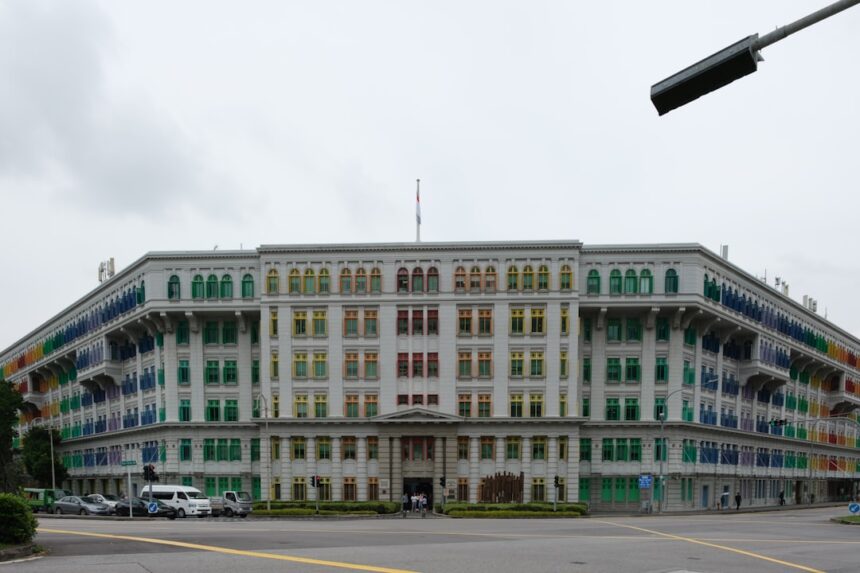The US Embassy takeover in Tehran in 1979 marked a pivotal moment in American foreign policy and international relations. The backdrop of this event was steeped in decades of complex interactions between the United States and Iran, particularly following the 1953 coup that reinstated the Shah, Mohammad Reza Pahlavi, to power. This coup, orchestrated by the CIA, had long-lasting repercussions, fostering deep-seated resentment among many Iranians who viewed the United States as an imperialist force meddling in their affairs.
The Shah’s regime, characterized by authoritarianism and Westernization, alienated large segments of the Iranian population, particularly religious leaders and leftist groups who sought a return to traditional values and greater autonomy. As the 1970s progressed, discontent with the Shah’s rule intensified, culminating in widespread protests and civil unrest. The Islamic Revolution, led by Ayatollah Khomeini, gained momentum as it united various factions against the Shah’s regime.
By late 1978, the situation had escalated to a point where the Shah fled Iran, leaving a power vacuum that would soon be filled by Khomeini’s return from exile. The United States, which had long supported the Shah, found itself in a precarious position as it attempted to navigate the rapidly changing political landscape in Iran. This tension set the stage for the dramatic events that would unfold at the US Embassy in November 1979.
Key Takeaways
- The US Embassy in Tehran was taken over by Iranian students on November 4, 1979, leading to a 444-day hostage crisis.
- The takeover was preceded by growing anti-American sentiment in Iran, fueled by the US support for the Shah and his oppressive regime.
- The 52 American hostages endured physical and psychological trauma during their captivity, and their release had a lasting impact on US-Iran relations.
- The US government imposed economic sanctions and froze Iranian assets in response to the takeover, straining diplomatic relations between the two countries.
- The failed rescue attempt, known as Operation Eagle Claw, resulted in the deaths of eight American servicemen and further escalated tensions between the US and Iran.
The Events Leading up to the Takeover
The events leading up to the takeover of the US Embassy were marked by a series of escalating tensions and provocations. On November 4, 1979, a group of Iranian militants stormed the embassy in Tehran, taking 52 American diplomats and citizens hostage. This act was not an isolated incident but rather the culmination of months of growing animosity towards the United States.
The Iranian revolutionaries viewed the embassy as a symbol of American imperialism and interference in Iranian sovereignty. The decision to seize the embassy was fueled by anger over the US’s support for the deposed Shah, who had been granted asylum in the United States for medical treatment. In the days leading up to the takeover, protests against the US presence in Iran had intensified.
Demonstrators gathered outside the embassy, demanding that the US return the Shah to face justice for his oppressive regime. The atmosphere was charged with revolutionary fervor, and many Iranians saw the embassy as a legitimate target in their struggle against foreign influence. The militants who stormed the compound were not only motivated by a desire for revenge but also sought to galvanize support for their cause by showcasing their defiance against what they perceived as an imperialist power.
The Hostages: Their Experience and Impact

The experience of the hostages during their captivity was harrowing and traumatic. For 444 days, they endured psychological and physical hardships that would leave lasting scars on their lives. Initially, they were held in isolation, subjected to blindfolding and threats from their captors.
The uncertainty of their fate created an atmosphere of fear and anxiety, as they were often kept in cramped quarters with little information about what was happening outside. The hostages were forced to adapt to a new reality where their lives were dictated by their captors’ whims. The impact of their ordeal extended beyond their immediate experiences.
The hostages became symbols of American resilience and determination in the face of adversity. Their plight captured national attention and sparked widespread outrage across the United States. Families and friends of the hostages organized rallies and campaigns to raise awareness about their situation, fostering a sense of solidarity among Americans.
The media played a crucial role in shaping public perception, with nightly news broadcasts featuring updates on the hostages’ conditions and calls for their release. This heightened visibility contributed to a growing sense of urgency within the US government to resolve the crisis.
The Response from the US Government
| Metrics | Data |
|---|---|
| Number of COVID-19 cases | 30,000,000 |
| Number of COVID-19 deaths | 550,000 |
| Vaccination rate | 40% |
| Economic stimulus package | 1.9 trillion |
The US government’s response to the embassy takeover was multifaceted and evolved over time as the crisis unfolded. Initially, President Jimmy Carter’s administration sought diplomatic channels to negotiate for the hostages’ release. Carter condemned the takeover as an affront to international law and called for their immediate release.
However, as weeks turned into months with no resolution in sight, frustration grew within the administration and among the American public. In an effort to demonstrate resolve, Carter imposed economic sanctions on Iran and froze Iranian assets held in the United States. These measures aimed to pressure the Iranian government into complying with international norms regarding diplomatic missions.
However, diplomatic efforts proved largely ineffective as Khomeini’s regime remained steadfast in its refusal to negotiate with what they considered an illegitimate government. As public sentiment shifted towards a desire for more decisive action, Carter faced mounting pressure to take a more aggressive stance.
International Reactions to the Takeover
The international community reacted with a mix of condemnation and concern following the takeover of the US Embassy in Tehran. Many countries viewed the incident as a blatant violation of diplomatic norms and international law. The United Nations General Assembly passed resolutions calling for the immediate release of the hostages and reaffirming the inviolability of diplomatic missions.
However, responses varied significantly depending on geopolitical interests and relationships with Iran. Some nations expressed solidarity with Iran’s revolutionary government, viewing it as a legitimate expression of anti-imperialist sentiment.
This division highlighted the complexities of international politics during this period, as nations grappled with their own interests while navigating a crisis that had far-reaching implications for global diplomacy.
The Failed Rescue Attempt

As frustration mounted over the prolonged hostage crisis, President Carter authorized a military rescue operation known as Operation Eagle Claw in April 1980. This ambitious plan aimed to infiltrate Iran and extract the hostages from their captors. However, what was intended to be a swift and decisive operation quickly devolved into chaos.
A series of logistical failures and unforeseen complications plagued the mission from its inception. The operation faced significant challenges, including equipment malfunctions and adverse weather conditions that hampered air support. Ultimately, a tragic accident occurred when two aircraft collided during a refueling operation in the Iranian desert, resulting in several American casualties.
The failed rescue attempt not only underscored the difficulties of conducting military operations in hostile territory but also dealt a severe blow to American morale at home. The inability to secure the hostages’ release through military means further fueled public discontent with Carter’s administration.
The End of the Crisis: Negotiations and Release of the Hostages
The resolution of the hostage crisis came on January 20, 1981, coinciding with Ronald Reagan’s inauguration as President of the United States. After months of negotiations facilitated by intermediaries from Algeria, an agreement was reached that led to the release of all 52 hostages. The negotiations were complex and involved discussions about frozen assets and reparations for damages incurred during the embassy takeover.
The timing of their release was significant; it occurred just minutes after Reagan took office, leading some to speculate about whether Khomeini’s regime sought to undermine Carter’s presidency by delaying their release until after he left office. Regardless of motivations, this moment marked a turning point in US-Iran relations and left an indelible mark on American political history.
The Lasting Impact of the Takeover on US-Iran Relations
The US Embassy takeover had profound implications for US-Iran relations that continue to resonate today. In its aftermath, diplomatic ties between the two nations were severed, leading to decades of hostility characterized by mutual distrust and animosity. The event solidified Iran’s perception of America as an adversary seeking to undermine its sovereignty while reinforcing American views of Iran as a rogue state.
The legacy of this crisis has shaped subsequent interactions between Washington and Tehran, influencing foreign policy decisions and military strategies in the region. The memory of American hostages has become emblematic of broader geopolitical tensions in Middle Eastern affairs, complicating efforts toward reconciliation or dialogue between both nations.
The Aftermath: Political and Social Consequences
In addition to its impact on foreign relations, the embassy takeover had significant political ramifications within the United States. President Carter faced intense criticism for his handling of the crisis, which contributed to his defeat in the 1980 presidential election against Ronald Reagan. The perception that Carter had failed to protect American citizens abroad resonated deeply with voters who sought strong leadership during times of crisis.
Socially, the hostage crisis galvanized public opinion around issues related to national security and foreign policy. It sparked debates about America’s role in global affairs and prompted discussions about how best to protect American interests abroad without resorting to military intervention. The event also influenced popular culture, inspiring films, books, and documentaries that explored themes of heroism, sacrifice, and resilience.
Remembering the Victims and Heroes of the US Embassy Takeover
The legacy of those involved in the embassy takeover extends beyond politics; it encompasses personal stories of courage and resilience among both hostages and rescuers alike. Many former hostages have shared their experiences through interviews and memoirs, shedding light on their struggles during captivity and their efforts to reintegrate into society afterward. Additionally, those who attempted rescue missions or advocated for hostages’ rights have been recognized as heroes who risked their lives for others’ safety.
Memorials honoring both victims and heroes serve as reminders of this tumultuous chapter in history while fostering discussions about diplomacy’s importance in resolving conflicts peacefully.
Lessons Learned from the US Embassy Takeover
The US Embassy takeover offers critical lessons about diplomacy, crisis management, and international relations that remain relevant today. It underscores how historical grievances can shape contemporary conflicts while highlighting how miscommunication can exacerbate tensions between nations. Moreover, it emphasizes that effective diplomacy requires patience, understanding cultural contexts, and recognizing when military intervention may not be appropriate or effective.
As global dynamics continue evolving rapidly amid shifting power balances worldwide, reflecting on past crises like this one can inform future approaches toward conflict resolution while promoting dialogue over confrontation whenever possible.
The 1979 takeover of the US embassy in Tehran was a pivotal moment in US-Iran relations, marking the beginning of a prolonged diplomatic crisis. This event not only strained bilateral ties but also had significant implications for international diplomacy and security. For a deeper understanding of the geopolitical context and the subsequent developments in US-Iran relations, you can explore a related article on the topic by visiting In The War Room. This resource provides insightful analysis and historical perspectives that shed light on the complexities of the situation and its lasting impact on global affairs.
WATCH THIS! From Tehran to Blackwater: The Real Story
FAQs
What was the US embassy takeover in 1979?
The US embassy takeover in 1979 refers to the seizure of the United States embassy in Tehran, Iran by Iranian students on November 4, 1979. The students held 52 American diplomats and citizens hostage for 444 days.
What led to the US embassy takeover in 1979?
The US embassy takeover in 1979 was a result of the Iranian Revolution, which overthrew the US-backed Shah of Iran and led to the establishment of an Islamic republic under Ayatollah Khomeini. The revolution was fueled by anti-American sentiment and resentment towards US involvement in Iranian affairs.
How did the US government respond to the embassy takeover?
The US government responded to the embassy takeover by imposing economic sanctions on Iran, freezing Iranian assets in the United States, and cutting off diplomatic relations with Iran. Additionally, the US attempted a rescue mission, known as Operation Eagle Claw, which ultimately failed.
When were the hostages released?
The hostages were released on January 20, 1981, after 444 days in captivity. Their release coincided with the inauguration of President Ronald Reagan, leading to speculation that the Iranian government had delayed their release for political reasons.
What impact did the US embassy takeover have on US-Iran relations?
The US embassy takeover in 1979 had a significant and lasting impact on US-Iran relations. It led to a deepening of hostilities between the two countries, with the US imposing further sanctions and Iran adopting a hostile stance towards the US. The event continues to shape the relationship between the two nations to this day.




